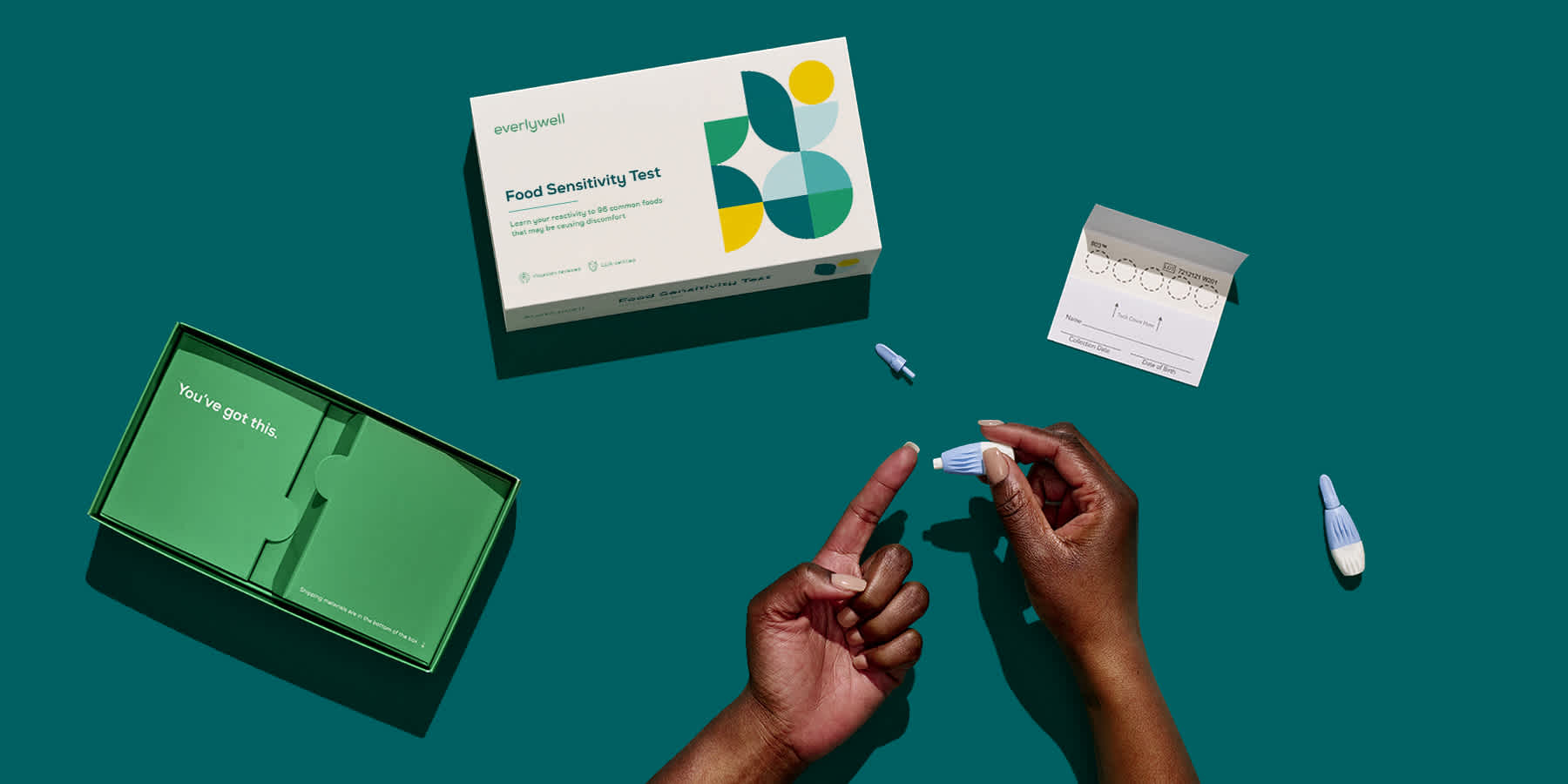
IgG vs. IgE antibodies: understanding the differences
Medically reviewed on June 14, 2022 by Jordan Stachel, M.S., RDN, CPT. To give you technically accurate, evidence-based information, content published on the Everlywell blog is reviewed by credentialed professionals with expertise in medical and bioscience fields.
When you have a food allergy, it can often be clear that you have it. But if you’re faced with an itchy throat hours after eating, it can be hard to link your symptoms with a particular food.
That’s when knowing the difference between an IgG or an IgE test can help.
Both IgG and IgE antibody levels indicate that your body is having an allergic reaction. However, there are a few key differences between these two reactions. For greater visibility regarding possible food sensitivities or allergies, read our IgG vs. IgE guide below (and for IgG testing try the Everlywell Food Sensitivity Test.
Learn more about the difference between food sensitivity and food allergy.
Antibodies: the body’s red flag
Before explaining the differences, let’s discuss exactly what IgG and IgE are—protective antibodies.
When the body judges a foreign substance as dangerous, the immune system fights back just as if it was fighting an illness.
The body’s weapon of choice? A class of antibodies known as immunoglobulins.
Depending on the severity of the reaction, different immunoglobulins are used. The body’s three food-related immunoglobulins include [1]:
- Immunoglobulin E (IgE) – A rapid immune response that can be triggered by food
- Immunoglobulin G (IgG) – A more delayed and potentially more mild immune response that can be triggered by food
- Immunoglobulin A (IgA) – An antibody that can support the immune functions of mucous membranes
IgE and IgG tests could be the key to unlocking additional food-related insights.
IgG: the food sensitivity test
If you’re facing stomach grumbles or headaches at inconsistent times, you might be experiencing a food sensitivity.
Though science isn’t sure of the exact mechanisms that cause food sensitivities, IgG antibodies are believed to lie somewhere near the center of the issue.
Let’s explore the typical signs of an IgG reaction.
IgG symptoms
The easiest way to identify an IgG-related food sensitivity? The symptoms.
IgG-based immune reactions tend to be much slower than those associated with allergies [2]. However, that doesn’t make food sensitivities any less bothersome.
If you suspect you may have a food sensitivity, consider taking the Everlywell at-home Food Sensitivity Test.
Common foods for IgG testing
At the end of the day, almost any food can trigger a sensitive reaction—it all depends on your unique biological system. But for most people, these foods are the common culprits behind any IgG-related intolerances [3]:
- Lactose (or dairy)
- Eggs
- Peanuts
- Shellfish
- Corn
- Soy
- Gluten
- Yeast
- Coffee
To discover food sensitivity triggers, an IgG blood test can point the way. After receiving the results, it’s time to try a two-part elimination diet or temporary elimination and add-back challenge. In other words, you can try eliminating and slowly reintroducing a portion of food to your plate. This step can help determine if that food is truly the cause of an IgG-related food sensitivity.
IgE: an allergy test
Immediate hives? Instant rashes? Difficulty breathing after eating? Any of these food allergy symptoms could signal that you’re facing an IgE immune response.
IgE antibodies are the body’s primary immune response against a foreign substance. When the immune system sees an ingested, inhaled, or even touched substance as a threat, it will quickly send IgE antibodies to trigger a direct allergic reaction. Usually, this reaction is more severe and more immediate than symptoms that occur with food sensitivities.
IgE symptoms
Severe allergies tend to be obvious—they’re usually debilitating or even fatal. But when symptoms are mild, it can be tough to determine if they are a sensitivity or an allergy. That’s when inspecting for common IgE reaction symptoms can help [4]:
- Breathing issues (wheezing, heavy breathing, triggered asthma)
- Skin inflammation (hives, eczema)
- Swollen facial tissue, tongue, or limbs
- Mouth tingles or itches
- Nasal drip or congestion
- Digestive issues (cramps, diarrhea, vomiting)
- Dizziness and lightheadedness
- Anaphylaxis (potentially fatal body system shutdown)
Common substances for IgE testing
There’s crossovers between allergy-causing foods and foods that provoke a degree of sensitivity. However, allergic reactions also include non-food substances—everything from cat hair to dust.
When taking an IgE test, here are the most common allergies that may trigger a reaction [5]:
- Pollen
- Peanuts
- Tree nuts (walnuts, almonds, etc.)
- Shellfish
- Animal dander
- Insect bites or stings
- Dust mites
In general, it’s best to avoid any substance that may have been revealed as triggering your IgE levels, but be sure to talk about this with your healthcare provider. With time and proper health maintenance, you may be able to decrease the severity of your body’s IgE response to a certain substance [6].
IgG and IgE testing with Everlywell
Everlywell offers several IgG and IgE testing options, with sample collection done from the convenience of home:
- Food Sensitivity Test and Food Sensitivity Comprehensive Test for food-related IgG testing
Related content
IgG food test results interpretation
Dairy alternatives to consider for dairy-related issues
References
1. Classes of immunoglobulins. Britannica. URL. Accessed June 14, 2022.
2. Type II Hypersensitivity Reaction. Britannica. URL. Last updated September 5, 2022. Accessed November 2, 2022.
3. Food Allergies and Sensitivities: the Difference Between IgE and IgG Reactions. VNutrition & Wellnes. URL. Accessed June 14, 2022.
4. The 10 Most Common Food Sensitivities. VeryWell Health. URL. Accessed June 14, 2022.
5. Food Allergy vs. Food Intolerance: Symptoms, Causes & Prevention. Cleveland Clinic. URL. Accessed June 14, 2022.
6. The 10 Most Common Food Sensitivities. National Health Service. URL. Accessed June 14, 2022.
